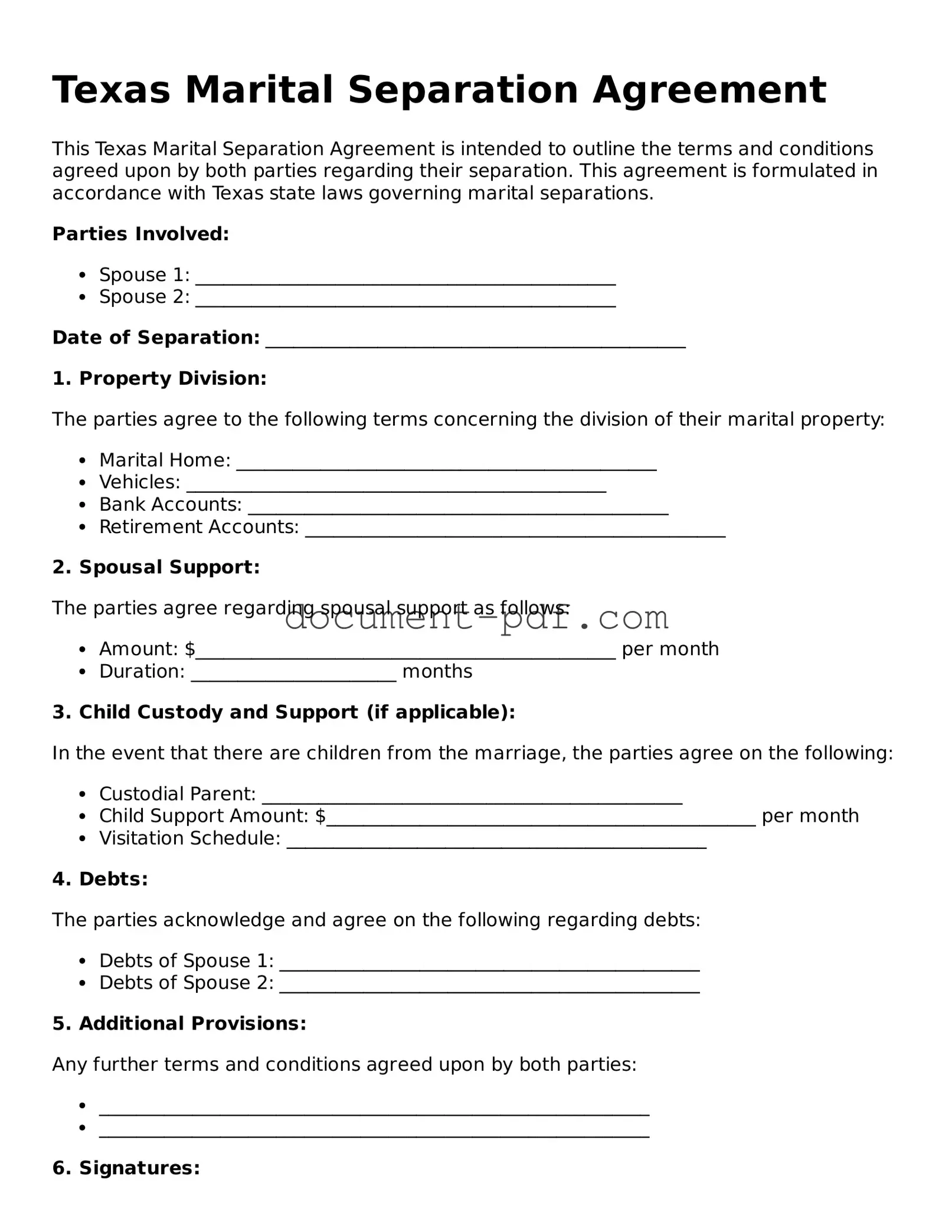Texas Marital Separation Agreement
This Texas Marital Separation Agreement is intended to outline the terms and conditions agreed upon by both parties regarding their separation. This agreement is formulated in accordance with Texas state laws governing marital separations.
Parties Involved:
- Spouse 1: _____________________________________________
- Spouse 2: _____________________________________________
Date of Separation: _____________________________________________
1. Property Division:
The parties agree to the following terms concerning the division of their marital property:
- Marital Home: _____________________________________________
- Vehicles: _____________________________________________
- Bank Accounts: _____________________________________________
- Retirement Accounts: _____________________________________________
2. Spousal Support:
The parties agree regarding spousal support as follows:
- Amount: $_____________________________________________ per month
- Duration: ______________________ months
3. Child Custody and Support (if applicable):
In the event that there are children from the marriage, the parties agree on the following:
- Custodial Parent: _____________________________________________
- Child Support Amount: $______________________________________________ per month
- Visitation Schedule: _____________________________________________
4. Debts:
The parties acknowledge and agree on the following regarding debts:
- Debts of Spouse 1: _____________________________________________
- Debts of Spouse 2: _____________________________________________
5. Additional Provisions:
Any further terms and conditions agreed upon by both parties:
- ___________________________________________________________
- ___________________________________________________________
6. Signatures:
By signing below, both parties agree to the terms of this Texas Marital Separation Agreement.
Spouse 1 Signature: _________________________ Date: ________________
Spouse 2 Signature: _________________________ Date: ________________
